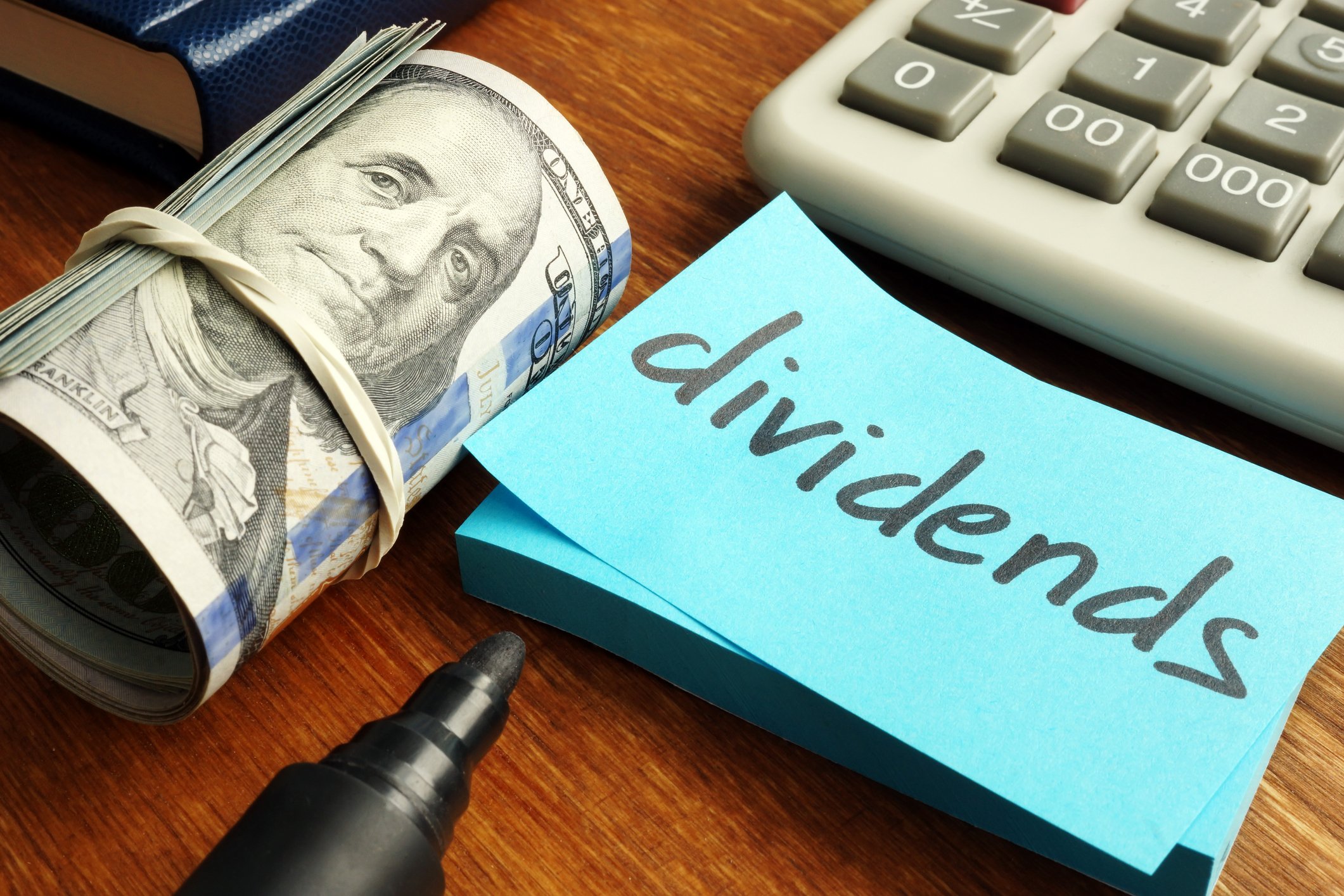Investors know that the stock market has been the greatest creator of long-term wealth. However, that changed in 2017, with cryptocurrencies leading investors to what could well be described as the greatest single year of gains for an asset class on record. Having begun the year with a combined market cap of $17.7 billion, cryptocurrencies ended the year with an aggregate value of $613 billion. That's an increase in value of more than $3,300%.
Bitcoin and blockchain feed the cryptocurrency rally
Bitcoin is often credited with being the face of this rally, which does make sense. It became the world's first tradable cryptocurrency, is the virtual coin most accepted among merchants around the world, and is most responsible for bringing blockchain technology into the limelight. Blockchain is the digital, distributed, and decentralized ledger that records all transactions without the need for a financial intermediary.

Image source: Getty Images.
Aside from bitcoin itself, blockchain is the main reason why cryptocurrencies continue rallying. The evolution of blockchain stems from the idea that the current banking system has flaws which need to be fixed. These flaws include high transaction fees as a result of banks acting as a third-party during transaction, and slow processing times, especially in cross-border transactions that can sometimes result in three- to five-day wait times.
What blockchain brings to the table are three specific advantages. First, we have decentralization, which ensures that no one entity or cybercriminal can gain hold of information that could cripple a network. With data stored on hard drives and servers all over the world, blockchain is considered to be exceptionally safe.
Second, blockchain takes financial institutions out of the equation as third-party providers. With fewer folks taking transaction fees, the belief is that the fees themselves should fall. That either means lower costs for consumers, or at the very least better margins for businesses.
Finally, but most importantly, blockchain can dramatically speed up transaction processing times. Because proofing and validation of transactions is occurring 24 hours a day, seven days a week, it's possible for transactions that took days to process to now settle in just a few seconds. It could transform the financial services industry, while also adding value to retailers, tech companies, and the energy industry through network and supply-chain management.

Image source: Getty Images.
Ripple bursts onto the scene
This coming out party for blockchain has really paid dividends for the cryptocurrencies in bitcoin's rearview mirror. In particular, Ripple emerged from bitcoin's shadow to explode higher by nearly 50,000% in a span of about 53 weeks. The jump in Ripple was almost entirely tied to its blockchain.
Ripple's primary focus is on partnering with large financial institutions and replacing existing payment networks. It announced in June 2016 that seven global banks were testing out its blockchain in varied capacity, but Ripple didn't really take off until it partnered with American Express (AXP +0.82%) and Banco Santander (SAN +1.01%) in a real-world cross-border deal in mid-November 2017. This partnership allows American Express users to send non-card payments to U.K. Santander accounts over AmEx's FX International Payment network, and will process those transactions through Ripple's blockchain. It's believed that this could lead to instantly processing transactions.
Ripple gained even more momentum earlier this month by announcing a partnership with money transfer service MoneyGram International (MGI +0.00%). This deal will focus more on Ripple's coin, XRP, in expediting cross-border payments. The idea here being that a domestic currency, like the dollar, could be quickly converted into XRP, and then quickly converted into the currency of the destination country outside the United States.
The partnership with MoneyGram is also exciting given that Ripple's transaction costs are a mere fraction of a cent, compared to bitcoin, which can approach $30.

Image source: Getty Images.
Ripple's investors have a lot to worry about
Yet in spite of these catalysts, Ripple's investors still have a lot to be worried about. In no particular order, here are three main concerns.
1. Big banks are developing their own blockchain
One of the greatest concerns for all cryptocurrencies is the relatively low barrier to entry. It only takes time, money, and a team that understates how to write computer code, to develop blockchain technology and a tethered digital coin.
But Ripple might have an even bigger worry than just looking in its rearview mirror at other cryptocurrencies. Despite its focus on global financial institutions, banks aren't necessarily counting on Ripple's blockchain to be the answer. In August 2017, six global banks -- Barclays, Credit Suisse, Canadian Imperial Bank of Commerce, HSBC, Mitsubishi UFJ Financial Group, and State Street -- announced that they were working together to create a "utility settlement coin" to function on the proprietary blockchain they were developing. According to UBS's head of strategic investment and fintech innovation, Hyder Jaffrey, in an interview with the Financial Times, this blockchain project is set to go live in late 2018, with a slow but progressive rollout.
The two things investors have to understand here is that (1) these banks have much deeper pockets than Ripple does, and (2) it's a lot easier to get banks to take the plunge on testing blockchain when it's developed internally than it is to get them to test a network that was developed externally, like Ripple's blockchain.
In short, it could be tougher than Ripple's development team realizes to compete with proprietary blockchains from the banks themselves.

Image source: Getty Images.
2. Ripple's valuation is questionable with only two real-world tests in its pocket
Second, Ripple's investors should be seriously concerned about the market cap of the XRP coin, which stood at roughly $55 billion on Jan. 21. That's a really hefty price to pay for a blockchain that's currently in just two real-world tests, and has yet to be rolled out into any larger-scale projects. It's also a technology that's effectively pigeonholed into just the financial services industry.
By comparison, Ethereum, which Ripple surpassed in market cap briefly during its incredible run to begin the year, has 200 organizations around the globe testing a version of its blockchain technology. The Enterprise Ethereum Alliance is all about getting financial institutions, tech companies, energy companies, and even government organizations, testing Ethereum's customizable blockchain and smart contract protocols in some capacity. Ethereum has demonstrated its ability to scale its blockchain far better than Ripple, and it has the potential to transcend the financial industry.
What's more, Ripple will have to overcome integrational objections from financial institutions. Blockchain doesn't always play nice with existing network infrastructure, which could mean a time-consuming and costly swap-out should banks forge ahead with Ripple's solution.

Image source: Getty Images.
3. Ripple's blockchain may not be superior
Another major concern is that Ripple's purportedly superior network may not remain at the top of the food chain for long.
According to an analysis by HowMuch.net, Ripple's network is capable of processing up to 1,500 transactions per second, which is over 200 times higher than bitcoin. It also has transaction fees that are just a fraction of a cent. This is what's currently working in Ripple's favor, but I'm not certain it'll last.
Though not all blockchains are specifically geared at the financial services industry like Ripple, there are now quite a few designed to be completely free of transaction fees. Even though Ripple's fees are negligible, "free" still trumps any sort of transaction costs.
Furthermore, there are cryptocurrencies processing transactions even quicker than Ripple. RaiBlocks, a self-described low-latency cryptocurrency that uses a block-lattice architecture, stress-tested its own network and was able to operate at 7,000 transactions per second. RaiBlocks also has zero transaction fees, since running nodes cost next to nothing, by its own admission. The block-lattice design of RaiBlocks also ensures smooth scalability.
Though trying to compare Ripple and RaiBlocks is like comparing two exotic fruits from different parts of the world, the idea here is to point out that the barrier to entry among cryptocurrencies could allow for a superior network to come along at any moment. There are virtually no protections guaranteeing Ripple a spot as the preferred blockchain among financial institutions.
Caveat emptor, Ripple investors.





